Join More Than 50,000+ Subscribers and get latest camera news and rumors
NEW CAMERA VIDEOS ON YOUTUBE
|
By admin, on January 3rd, 2025
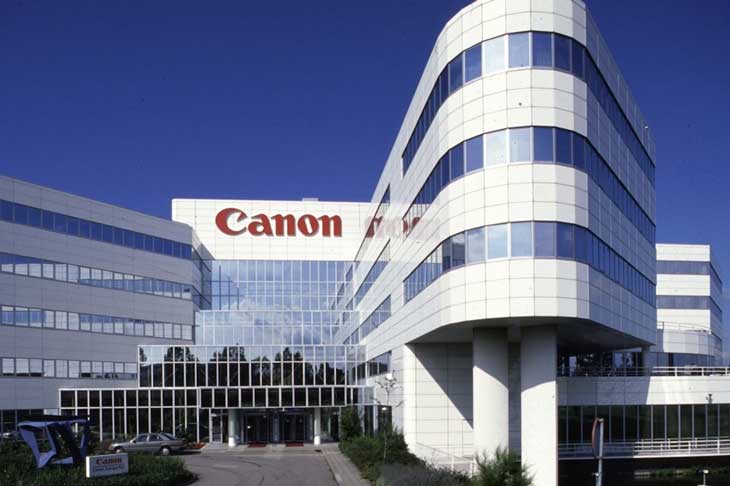
A recent press release from Canon suggests a major change inside, Canon U.S.A. has promoted several leaders to new roles, starting January 1, 2025. Kiyoshi Oka is now the Executive Vice President of Marketing Strategy, and Masato Mori is the Senior Vice President of Business Innovation. Four others, including Karin Harrington, William Lowe, Dawn Rouse, and Jami Schultz, have been promoted to Vice Presidents in various departments. Canon’s CEO, Isao “Sammy” Kobayashi, highlighted these promotions as key to driving success and innovation in the year ahead.
Take a look at the official press release from canon
Canon U.S.A. Announces New Executive Appointments for 2025
MELVILLE, N.Y., January 3, 2025 – Canon U.S.A., Inc. is proud to announce new executive promotions, effective January 1, 2025.
Kiyoshi Oka has been promoted to executive vice president and general manager, Marketing Strategy Unit, while Masato Mori has been promoted to senior vice president, Business Innovation Group. Additionally, four executives have been promoted to vice president, including Karin Harrington (Business Partner Group), William Lowe and Dawn Rouse (Client Services Group) and Jami Schultz (Corporate Human Resources).
These new appointments represent Canon’s strong commitment to elevating its employees and placing them in positions to succeed, further solidifying Canon’s position as a leader in digital solutions.
“It is critical to have strong leaders to guide our organization, and I’m delighted to announce these executive appointments for a group of well-deserving individuals who have been so dedicated to our success,” said Isao “Sammy” Kobayashi, President and CEO of Canon U.S.A., Inc. “We are looking forward to a successful 2025, and I’m confident these appointments will contribute greatly to achieving that goal.”
Get LIVE RUMORS –> FACEBOOK | TWITTER | INSTAGRAM to get live news + Canon rumors 24X7
By admin, on January 3rd, 2025
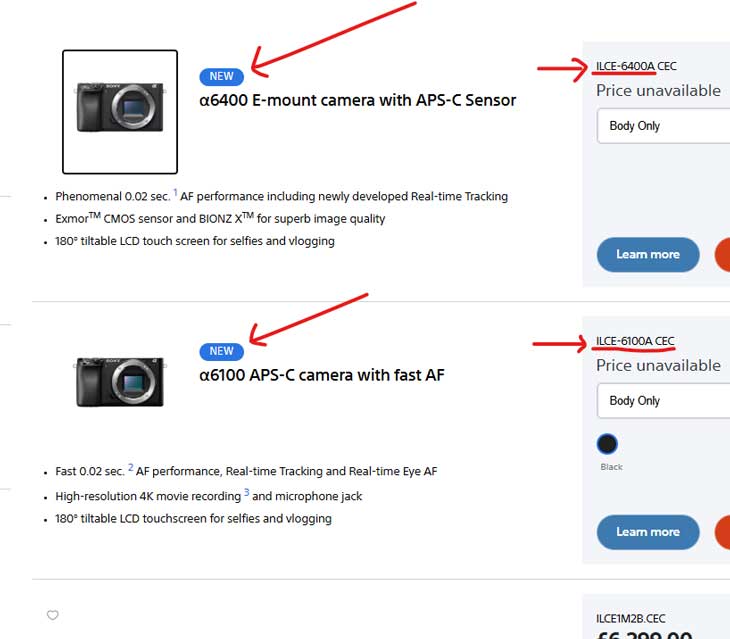
These two updated models first appeared on the Sony UK website. After closely examining the core specifications of both cameras, there were no noticeable differences.
Previously, when Sony updated full-frame models like the Sony a7R IIIa and the Sony a7R IVa, they upgraded the
- LCD screen from 1.44 to 2.3 million dots.
- Both cameras were also upgraded to a USB 3.2 port.
- The new display monitors do not have the Sony logo.
- Battery life remains the same since both the new and old models use NP-FZ100 batteries.
It has generally been observed that when brands face issues with display manufacturers, they tend to update models silently. This has been more common with Panasonic cameras.
So, what has Sony updated in the new a6400a and a6100a models?
Now instead of charging Sony’s AC-UUE12 AC-USB adaptor Sony is supplying BC-TRW standalone chargers with these models, you have to physically remove the battery from the camera and put it in the charging station, it is better than in-camera charging, and also batteries get re-filled at a fast pace.
Follow us on our social pages FACEBOOK | TWITTER | INSTAGRAM, If you have time –>see more Sony Alpha Rumor
source www.sony.co.uk
By admin, on January 2nd, 2025
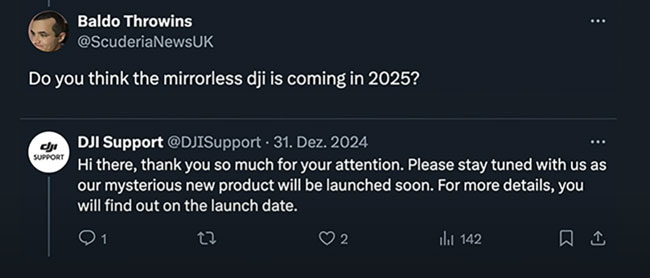
According to the latest set of rumors, DJI may announce a new product very soon. It all started when someone asked the DJI Supprt team directly on Twitter if there is any possibility of a mirrorless camera system from DJI.
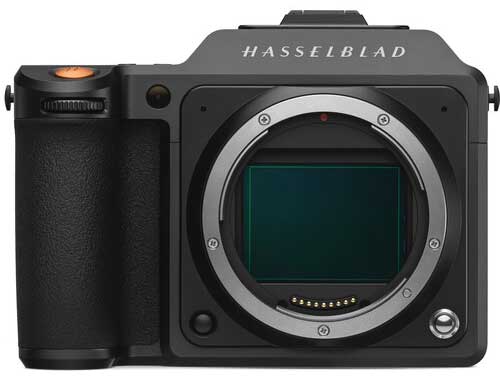
They have acquired Hasselblad and already have a range of medium format mirrorless cameras, there is still no mirrorless system camera under DJI branding yet. Although they are very advanced in making photographic equipment, as is very clear from their drone cameras, gimbals, Creator Kit, and their dedicated Ronin 4D cinema camera.
So after looking at all the possibilities, and with the Internet turning wild on the creative side, the first thing that I checked is that the DJI Pocket 2 Creator Kit is now officially discontinued at the B&H store, and we are the first website to report that.
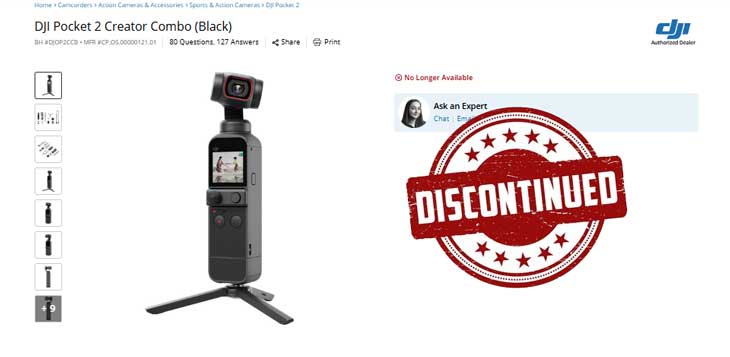
So it’s a very clear indication that DJI is cleaning up the Pocket 2 combo pipelines or the stock lines, and it’s a very obvious thing when a camera maker or any major brand when they announces a new product. The first thing they do is clear up the stock lines of their previous generation models. Specifically, we are talking about the Pocket 2 Creator Combo. While the Pocket 3 Creator Combo is still available online, they need to make space in the production line as well as in the shelves of their own stores to make room for a new one.
It’s a very clear indication that we may have an announcement of the DJI Pocket 4 Creator Combo camera possibly this year, 2025.
Now again, about the mirrorless camera system, yes, we have had strong rumors in the past that DJI is super interested in announcing their own series of full-frame and APS-C mirrorless camera systems with L-Mount. Based on the set of rumors that we have published—you can check it here— We cannot rule out that possibility either; there is a strong likelihood of seeing a mirrorless lineup from DJI in 2025.
DJI Hasselblad to Expand Mirrorless System Cameras [Rumor]
Follow us on our social pages FACEBOOK | TWITTER | INSTAGRAM, If you have time –>see more Camera News and DJI Rumors
By admin, on January 1st, 2025
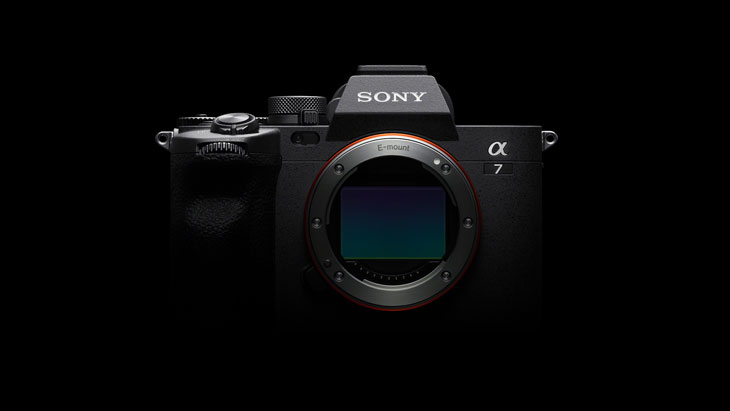
According to the latest rumors surfaced the Sony A7 V camera is coming very soon. Sony may announce a brand new camera at CES 2025, and according to their information, it could be the A7 V camera. The information is coming out from Camerabeta(webio), so we have to take it with a grain of salt
At the very same time, just prior to the official announcement of a camera, we generally get a lot of leaks, like leaked images, core specifications, and all these kinds of hints for 10 or 15 days before an official announcement. The big reason behind that is that a lot of review units get distributed just prior to the announcement of any camera to create sample reviews and a kind of positive environment.
However, the entire situation is quite dry, which doesn’t indicate a major announcement in the next 15 days.
But again, if we get any information related to upcoming cameras or lenses, we will update you very soon. Stay tuned for upcoming updates!
Also see
Sony A7 V Surfaces at Wireless Certification Agency
Sony A7 V Rumors: A 44MP Sensor and AI Power – What You Need to Know!
Follow us on our social pages FACEBOOK | TWITTER | INSTAGRAM, If you have time –>see more Camera News and Sony Alpha Rumor
By admin, on December 31st, 2024

We thank you very much for your support and for the many people who visited TheNewCamera.com and shared their comments. This year marks the 15th anniversary since the site was launched, and we have been able to continue this journey only thanks to our loyal readers. We deeply appreciate your support and look forward to continued engagement this year.
In 2025, we aim to enjoy exploring rumors and news about cameras, lenses, and other imaging equipment with our readers. We hope you will continue to support us and share our passion for photography.
Top 10 Best Cameras Under $500 in 2025 | Nikon Upcoming Camera 2025 | Canon Upcoming Camera 2025
By admin, on December 28th, 2024
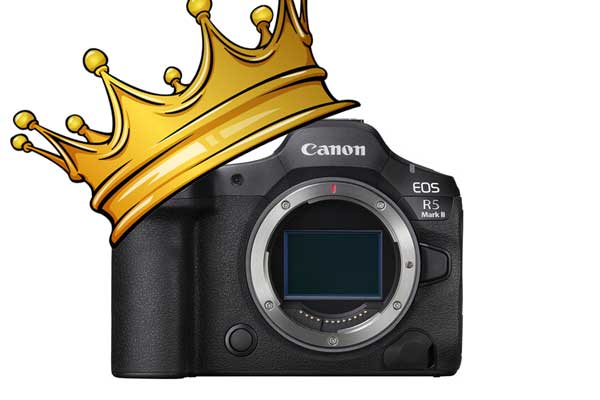
The map camera ranking for December is out now. The best camera is the Canon 5 Mark II, and just below that, we have the Canon R1. Despite having a high price tag, the top two models are Canon, and just after that, we have a Sony A7C Mark II camera. Slowly but steadily, the Z50 II ranking is also rising. Right now, we have Z50 II at number 5. Take a look at the list below
December 2025 MAP camera Rakings
- Canon EOS R5 Mark II body
- Canon EOS R1 body
- Sony α7C II with zoom lens kit
- Sony α1 II body
- Nikon Z50 II with dual zoom lens kit
- Sony α7C II body
- Fujifilm X-M5 with XC 15-45mm F3.5-5.6 OIS PZ lens kit
- Sony VLOGCAM ZV-E10 II with dual zoom lens kit
- Canon EOS R6 Mark II body
- Canon EOS R50 with dual zoom lens kit
Also look at – The top 10 Best Cameras Under $500 in 2025
Support us – Use or affiliate link Amazon.com | B&H Store for the next purchase u make – it helps us 🙂
Follow us on our social pages FACEBOOK | TWITTER | INSTAGRAM to get live Camera News +
By admin, on December 27th, 2024
Let’s discuss the best cameras in 2025 for under 500 dollars. The list is composed of the best mirrorless cameras, the best cameras for blogging, the best rugged cameras, and the best zoom cameras. We have tried to compose all the possible sets of cameras available under the 500-dollar price range, and all these cameras are among the best in their class. So just look through the list and select your best camera.
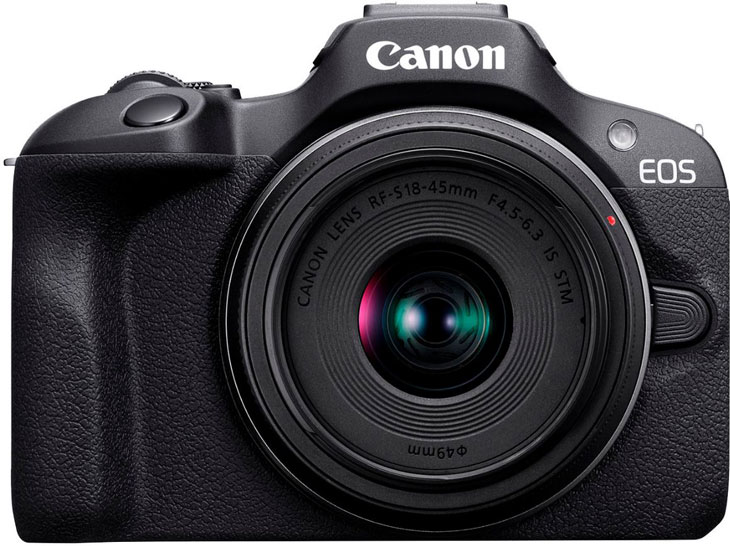
1. The best mirrorless cameras under 500 dollars
Canon R100 Camera
Price: $499 (approx.)
Deals Available at
Key Features:
- 24.1 MP APS-C CMOS sensor
- Dual Pixel CMOS Autofocus
- Full HD and 4K video recording (with a 1.5x crop)
- Compact and lightweight design
Why It’s Great for Beginners:
- Easy-to-use interface suitable for those new to photography.
- Excellent image quality with Canon’s trusted color science.
- Budget-friendly APS-C mirrorless option.
Cons:
- Limited 4K recording with a significant crop.
- Fixed Display
If you are interested in photography, then without a doubt, the Canon R100 camera is one of the best cameras Canon has ever made. The price range of the camera is 499 dollars, which suits your budget. At the same time, the camera can record high-quality images with its APS-C sensor. The camera is also able to record Full HD videos with full-time Dual Pixel CMOS autofocus support. Additionally, 4K video recording is possible with a 1.5x crop. So, it is recommended for photographers only.
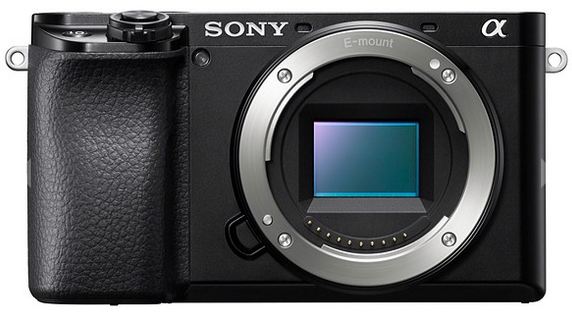
2. Best Budget Hybrid Camera Sony A6100 Camera in 2025
The Sony A6100 camera is available at 598 dollars (body only). For a kit lens or any prime lens, you need to spend extra, so it’s for those who have a slightly flexible budget beyond $500.
Price: $598 (Body only)
Deals Available at
Key Features:
- 24.2 MP APS-C sensor
- Uncropped 4K 30fps video recording
- 180° tilting display for selfies and vlogging
- Built-in electronic viewfinder
Why It’s Great for Beginners:
- Reliable autofocus system for stills and video.
- Compact body with professional-grade features.
- Excellent for content creators who are upgrading.
Cons:
- Slightly over $500 price range.
- Kit lenses are sold separately, adding to the cost.
The Sony A6100 camera is one of the best cameras Sony has ever made. It features a 24-megapixel APS-C sensor, uncropped 4K 30 fps video recording, and a 180-degree tilting display screen. You can record videos or create content effortlessly. The camera also features an electronic viewfinder, so you can capture images like a professional photographer. More or less, this is one of the feature-packed cameras available in a very reasonable price range. So, we have included this camera in our list. If possible, stretch your budget a bit more, and for sure, the Sony A6100 camera is one of the best cameras your money can buy.

3. Best M4/3 Camera Under $500 in 2025
Price: $499 (with 12-32mm kit lens)
Deals Available at
Key Features:
- 20.3 MP Micro Four Thirds sensor
- DFD (Depth from Defocus) autofocus system
- High-quality electronic viewfinder
- Compact and lightweight design
Why It’s Great for Beginners:
- Affordable interchangeable lens camera.
- Ideal for both photography and video creation.
- Easy to handle and learn.
Cons:
- Contrast-based autofocus is slower than hybrid systems.
The Panasonic G100D camera features a 20-megapixel Micro Four Thirds sensor and a DFD autofocusing system (Depth From Defocus). For photographers, this camera is a bargain under 500 dollars, especially with the 12-32mm kit lens. The camera also features a high-quality OLED electronic viewfinder. With this camera, you can capture snapshots as well as create content. However, the DFD autofocusing system is contrast-based, so it is not as fast as the hybrid AF system of the Sony A6100 camera. It is reliable but slightly slow. If your budget is very limited to under 500 dollars and you want an interchangeable lens camera for both photography and videography, the G100D is a good option.
Best blogging cameras available under 500 dollars
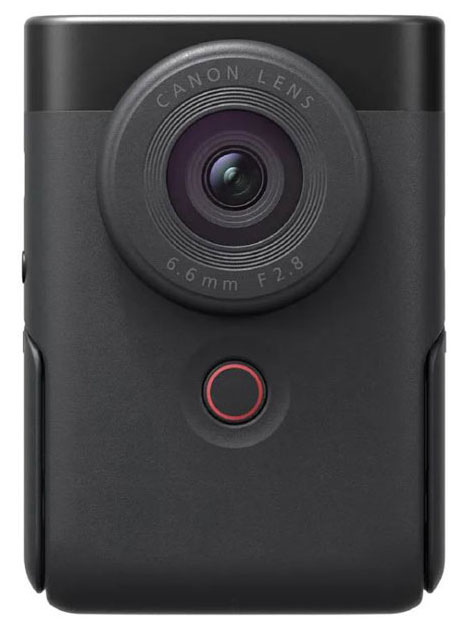
4. Best Canon Vlogging Camera Under $500 in 2025
Canon V10
Price: $300 (approx.)
Deals Available at
Key Features:
- Compact design with a 1-inch sensor
- 4K video recording at 30fps
- High-quality built-in microphone
- Simple controls for easy operation
Why It’s Great for Beginners:
- Perfect for vlogging and content creation on a tight budget.
- Highly portable and easy to use on the go.
- Affordable price point.
Cons:
- Basic features compared to other cameras.
The Canon V10 is a small 1-inch sensor-based compact camera specifically made for content creation. The camera is able to record 4K videos at up to 30 fps and features a high-quality inbuilt microphone. With very few controls and a compact body, the camera is highly suitable for on-the-go vloggers, especially if you have a limited budget of 300 dollars. This camera will suit your needs perfectly.
If your budget allows, and you can stretch up to 600 dollars, we have an amazing option:
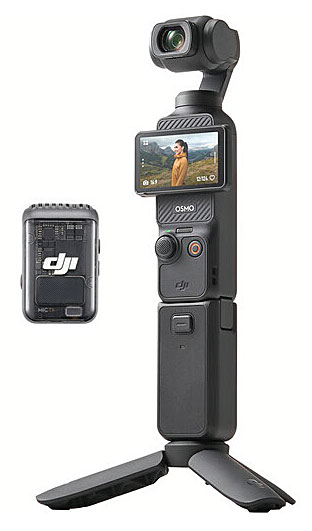
5. The Best Vlogging Kit With a Camera, Gimbal, and Wireless Mic
The DJI Pocket 3 Creator Kit with Accessories and Wireless Microphone
Price: $699 (approx.)
Deals Available at
Key Features:
- 1-inch sensor for high-quality footage
- Built-in 3-axis gimbal for stabilization
- Includes wireless microphone for crisp audio
- Compact, portable design
Why It’s Great for Beginners:
- Simplifies content creation with built-in stabilization and mic.
- Ideal for travel vlogging or handheld shooting.
- Easy to carry and operate.
Cons:
- Over $500 budget for entry-level users.
- Limited still photography capabilities
The DJI Pocket 3 Creator Kit features a high-quality 1-inch sensor. The camera is attached to a handheld gimbal that completely stabilizes your footage, even if you’re moving fast. The camera also includes gyro-based image stabilization for ultra-smooth footage. Additionally, the kit comes with a wireless microphone, which is essential for clean audio. All these features are packed into a device priced around 600 dollars. If you can stretch your budget, this is the best time to invest in a device like this for content creation.
The best Sony compact camera for creating content in 2025
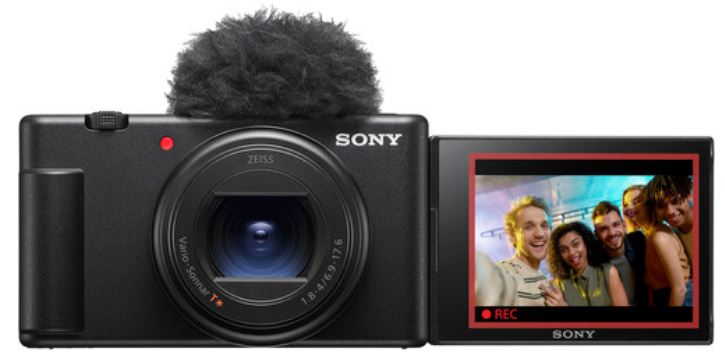
6. Best Sony Compact Under $500 in 2025
Sony ZV-1F
Price: $398 (approx.)
Deals Available at
Key Features:
- 20.1 MP 1-inch sensor
- 4K video recording
- Flip-out touchscreen for vlogging
- Compact design
Why It’s Great for Beginners:
- Designed specifically for content creators.
- Simple operation with high-quality video output.
- Reliable autofocus system.
Cons:
- No gimbal-like stabilization.
- No wireless mic include
The Sony ZV-1F is the best compact camera Sony has ever made under the 500-dollar price range for creating content on the go. Although it lacks a wireless microphone or a gimbal-like stabilization as found in the DJI Pocket 3 Creator Kit, it records excellent videos. If you prefer a Sony compact camera, this is a great option in the 500-dollar price range. However, if you can stretch your budget, the DJI Pocket 3 Creator Kit remains the most recommended device on this list.
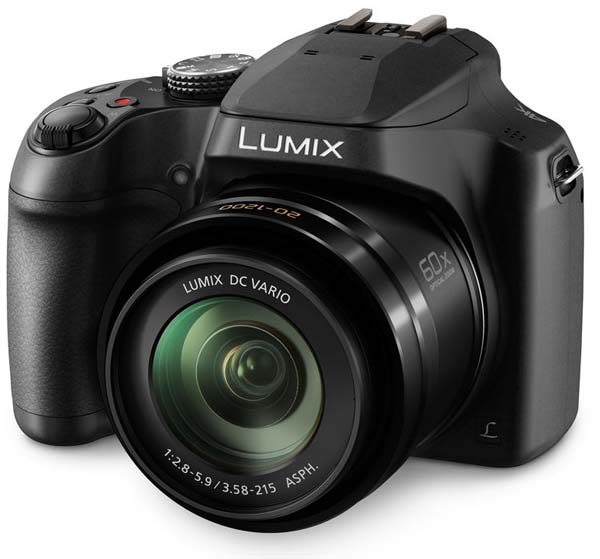
7. Best mega zoom Compact camera in 2025 under 500 dollars
Panasonic Lumix FZ80
Price: $450 (approx.)
Deals Available at
Key Features:
- 18 MP sensor with a 60x optical zoom lens
- Power O.I.S. (Optical Image Stabilization)
- Full HD and 4K video recording
- 10fps continuous shooting speed
Why It’s Great for Beginners:
- Versatile zoom lens for wildlife and travel photography.
- Affordable for a superzoom camera.
- Easy-to-use features for casual photographers.
Cons:
- Small sensor size limits low-light performance.
The Panasonic Lumix FZ80 features a 16-megapixel sensor and a high-quality Lumix DC Vario 60x optical zoom lens. With this lens, you can capture crisp and clear shots even at extreme focal lengths. The camera also supports Full HD and 4K video recording at up to 30 fps. Its ISO range starts from 80 and goes up to 3200. The camera’s continuous shooting speed is approximately 10 frames per second. This is one of the best budget-friendly cameras capable of capturing distant subjects with its 60x optical zoom lens.
The next camera is an instant camera that captures and prints images simultaneously
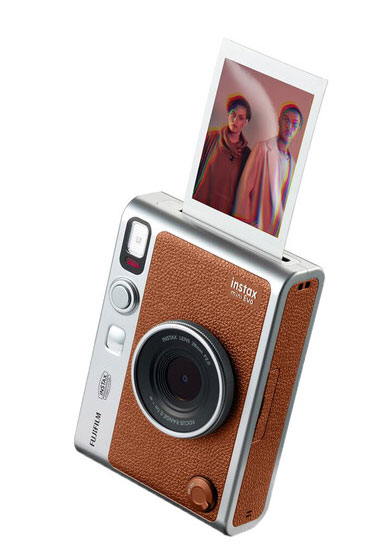
8. Best Instant Camera Under $200
Fujifilm Instax Mini EVO Hybrid Camera
Price: $200 (approx.)
Deals Available at
Key Features:
- 28mm fixed lens
- Instant print capability with Fujifilm Instax Mini films
- 3-inch LCD display
- Dual shutter buttons for ease of use
Why It’s Great for Beginners:
- Fun, instant-print feature for creative photography.
- Simple operation and retro design.
- Budget-friendly option.
Cons:
- Limited to fixed focal length.
- Image quality not comparable to larger sensor cameras
This camera, priced around 200 dollars, features a fixed 28mm f/2 lens, a 3-inch LCD display, and dual shutter buttons. You can save images on an SD card or print them instantly using Fujifilm Instax Mini films.
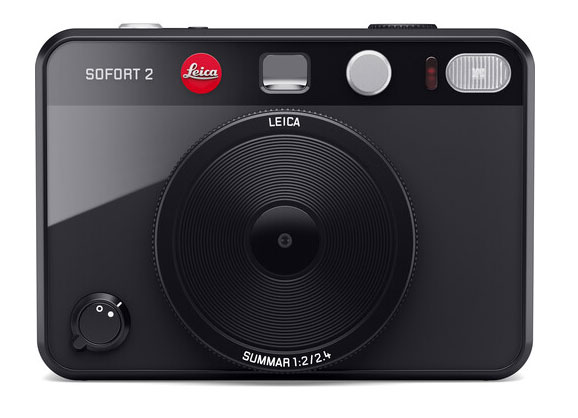
9. Only Leica Camera Under $500 in 2025
Leica Sofort Instant Camera
Price: $400 (approx.)
Deals Available at
Key Features:
- 28mm fixed lens
- Built-in flash and rechargeable battery
- Accepts Sofort instant film
- Compatible with Leica Photos app for editing
Why It’s Great for Beginners:
- Elegant design and excellent build quality.
- Easy-to-use instant camera with premium features.
- Rechargeable battery adds convenience.
Cons:
- High price for an instant camera.
- Limited creative control compared to digital cameras.
The Leica Sofort Instant Camera is priced under $400. It accepts Sofort film, features a 28mm f/2 lens, and has a 3-inch TFT display screen. It includes a built-in flash and a rechargeable lithium-ion battery. You can save images on a microSD card and customize your photos with the Leica Photos app.
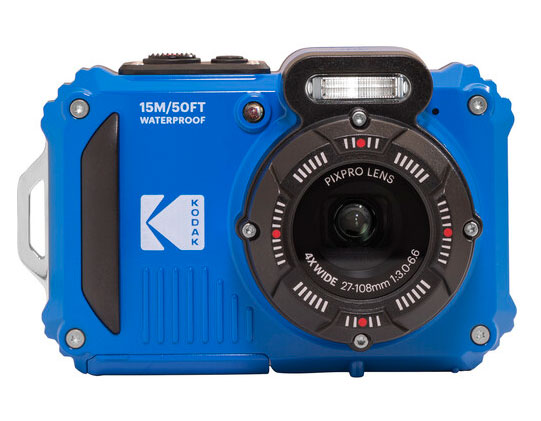
10. Best camera for kids under $200 in 2025
Kodak PixPro WPZ2
Price: $200 (approx.)
Key Features:
- 16 MP BSI CMOS sensor
- 4x optical zoom lens
- Waterproof and rugged design
- Full HD video recording
Why It’s Great for Beginners:
- Perfect for kids and adventure photography.
- Durable design for rough use.
- Affordable and easy to handle.
Cons:
- Limited manual controls.
- Smaller sensor affects image quality in low light
Deals Available at
The Kodak PixPro WPZ2 is a rugged camera featuring a 16-megapixel BSI CMOS sensor for high-quality images. It has a 4x optical zoom lens, is waterproof up to 49 feet, and is freeze-proof. The camera features a 2.7-inch LCD and captures Full HD videos at 30 fps. It is a great choice for kids or for capturing trip photos and videos.
See More – Top 10 Best Cameras Under $1000 in 2025
|
KEEP THIS BLOG ALIVE - Support New Camera Buy Canon Lenses, Buy Music CD or Digital Camera at amazon it helps this site, and you do not pay anything extra, it is just a way to help support this site.

|























